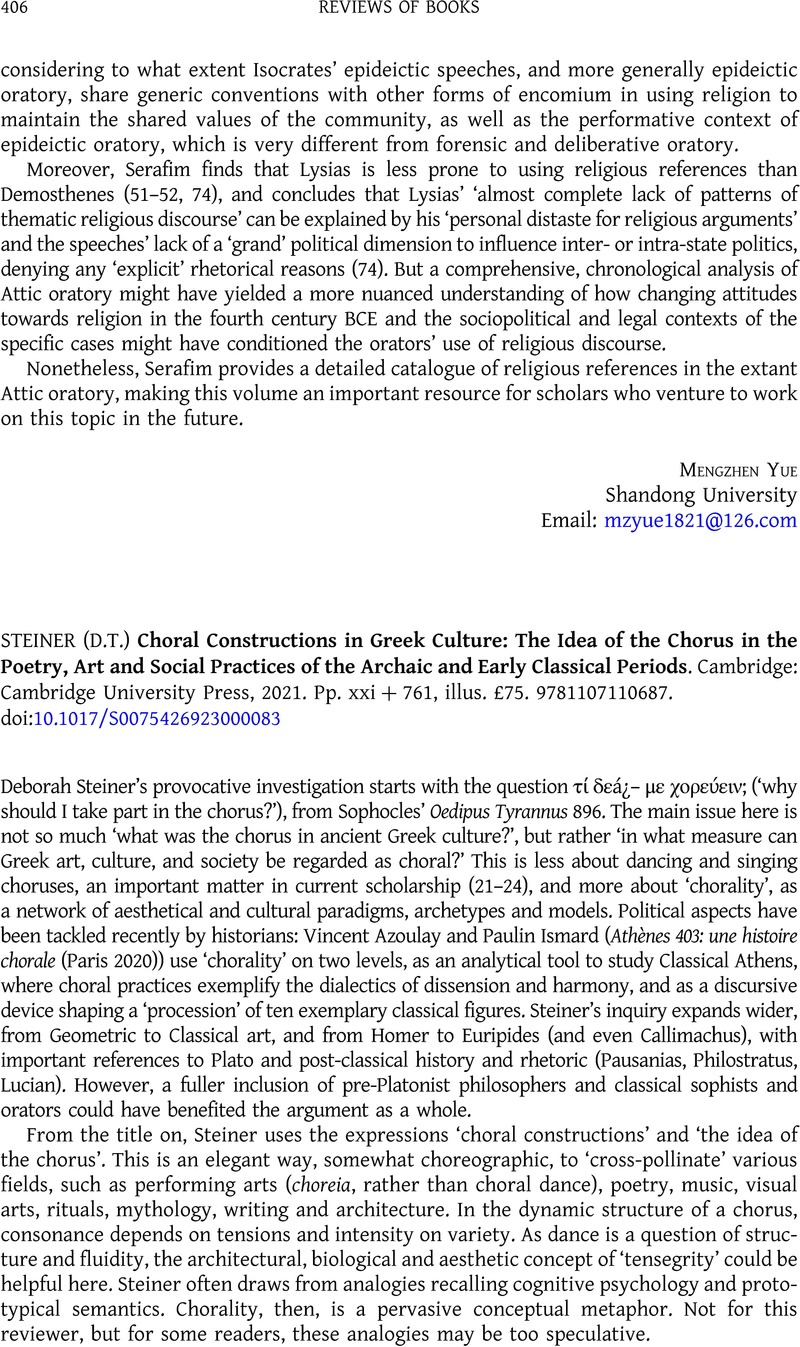No CrossRef data available.
Article contents
(D.T.) STEINER Choral Constructions in Greek Culture: The Idea of the Chorus in the Poetry, Art and Social Practices of the Archaic and Early Classical Periods. Cambridge: Cambridge University Press, 2021. Pp. xxi + 761, illus. £75. 9781107110687.
Review products
(D.T.) STEINER Choral Constructions in Greek Culture: The Idea of the Chorus in the Poetry, Art and Social Practices of the Archaic and Early Classical Periods. Cambridge: Cambridge University Press, 2021. Pp. xxi + 761, illus. £75. 9781107110687.
Part of:
Literature
Published online by Cambridge University Press: 09 May 2023
Abstract
An abstract is not available for this content so a preview has been provided. Please use the Get access link above for information on how to access this content.

- Type
- Reviews of Books
- Information
- Copyright
- © The Author(s), 2023. Published by Cambridge University Press on behalf of the Society for the Promotion of Hellenic Studies


